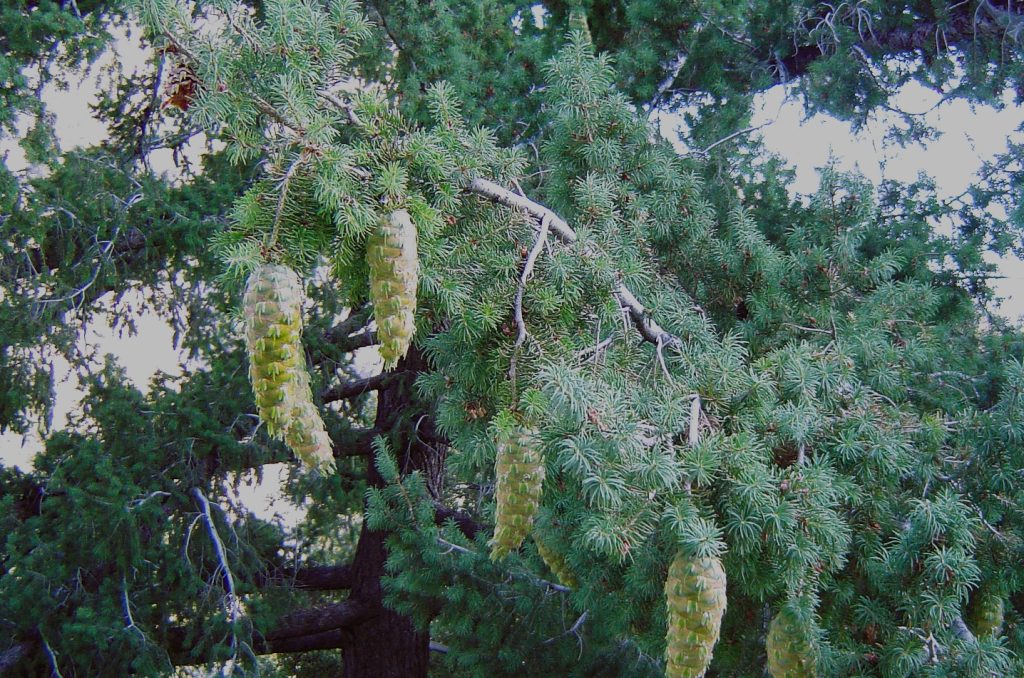Pseudotsuga macrocarpa: Guardian of Southern California

Unveiling the Bigcone Douglas Fir (Pseudotsuga macrocarpa)
Scientific Name: Pseudotsuga macrocarpa
Introduction
Pseudotsuga macrocarpa, aptly named the Bigcone Douglas Fir, stands as a perennial conifer native to Southern California. Thriving from the San Rafael Mountains in Santa Barbara County to the southwestern Tehachapi Mountains in Kern County, California, this species captivates with its distinct feature—having the largest cones in its genus.
Description
This majestic tree reaches heights of 15-30 meters, with a trunk diameter spanning 0.5-1.5 meters. Displaying a conical crown that stretches 12-30 meters wide, the Bigcone Douglas Fir boasts a robust root system. Its needle-shaped leaves measure 2.5-5 cm in length, while the cones, the tree's notable feature, extend 10-18 cm and house large, heavy seeds measuring 10 mm in length and 8 mm in width. These seeds, equipped with a short round wing of 12 mm in length, find dispersal through birds, mammals, and the wind. Remarkably, these trees start producing seeds at the age of twenty.
Care Guidelines for Bigcone Douglas Fir
Soil and Water:
- Soil Preference: Flourishes in well-draining soil.
- Watering Needs: Regular watering, especially during dry spells, supports optimal growth.
Longevity: Witnessing Centuries Unfold
The Bigcone Douglas Fir reveals its resilience through the ages, with the largest known tree reaching a height of 53 meters, a diameter of 231 cm, and estimated to be around 600-700 years old. This longevity is a testament to the tree's adaptability and endurance.
Common Pests and Diseases
Common Pests:
- Bark Beetles: Keep an eye out for bark beetles, especially in stressed trees.
- Aphids: Monitor for aphids during the growing season.
Diseases:
- Root Rot: Well-draining soil helps prevent root rot, a common concern in conifers.
- Needle Blight: Regular inspection for needle blight ensures early detection and management.
Frequently Asked Questions (FAQs)
1. How long does it take for Bigcone Douglas Firs to start producing seeds? These trees typically start producing seeds at the age of twenty.
2. What is the significance of the large cones in Pseudotsuga macrocarpa? The impressive size of the cones is a distinctive feature, contributing to seed dispersal through various means.
Conclusion
Caring for the Bigcone Douglas Fir involves understanding its unique characteristics and providing the necessary care to support its longevity and continued contribution to Southern California's natural beauty.

Leave a Reply
You must be logged in to post a comment.